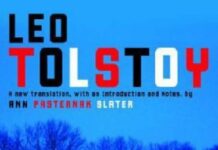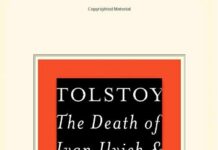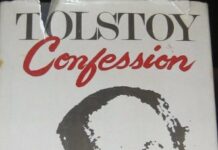
Ebook Info
- Published: 1986
- Number of pages: 192 pages
- Format: EPUB
- File Size: 0.51 MB
- Authors: Leo Tolstoy
Description
Shares Tolstoy’s three articles concerning the siege of Sebastopol and his observations of conditions and atrocities during the Crimean War
User’s Reviews
Reviews from Amazon users which were colected at the time this book was published on the website:
⭐For readers who enjoy War and Peace, The Sebastopol Sketches provides interesting insight not only in the military career of the author, Count Leo Tolstoy, but gives ample evidence of where he found the human experience to make such a classic novel. The book is set during the Crimean War in 1854-55, when Tolstoy was a 25-year-old artillery officer. A 31-page introduction by David McDuff lays out the background of Count Leo Toltsoy’s life, his entrance into the Russian Army and the beginning of the Crimean War. This introduction is well-written and informative. The sketches are divided into three chapters.December 1854This opening section is the shortest, at only 16 pages, and covers a brief visit that Tolstoy made to Sebastopol in search of supplies for his battery on 5 December 1854. Tolstoy was a very keen observer of detail and although brief, this section acts as a “you-are-there” sort of tour of the city, from the harbor quays out to one of the bastions. Here, Tolstoy makes several interesting observations, such as noting the conversations of several gunners and remarking that, “a feeling…of savage hatred for the enemy, and a wish to have revenge on him, a feeling that lurks in the soul of every human being.” Tolstoy was also impressed with the Russian character, claiming that, “the strength of the Russian people cannot possibly ever falter, no matter in what part of the world it may be put to the test.” This is the kind of tough talk of a chauvinistic young officer in love with his country, but one wonders what Tolstoy thought of his earlier writing when he lived long enough to see Russian arms humiliated in Manchuria in 1905.May 1855In Tolstoy’s second visit to Sebastopol, he initially focuses on a card game between several Russian officers (Tolstoy was an inveterate gambler, himself). This provides a useful literary device for sketching several “types” of Russian officers of the period. For example, one snobbish noble officer exclaims, “I really don’t see how men in dirty underwear, suffering from lice and not even able to wash their hands, can possibly be capable of bravery.” This is interesting commentary on how Russian upper-crust officers viewed the enlisted men who doing most of the fighting and dying (this theme appears again in War and Peace). Then, Tolstoi shifts as the card game ends and several officers make their way by a casualty dressing station, with them witnessing the suffering of these “dirty” enlisted soldiers. Later, Tolstoy notes the removal of dead Russian soldiers, and one of the characters says, “What a God-awful stink! That was all that remained of this man in the land of the living.” Tolstoy makes interesting comment along the way, noting that “once fear has found its way into the soul, it does not readily give way to any other emotion.” Indeed, there are no heroes in this account (Tolstoy says, my hero is truth), and Tolstoy describes junior Russian lieutenants as, “each is a little Napoleon, a little monster ready to start a conflict and kill a hundred or so men simply in order to obtain another star or an increase of a third in his pay.” The second section is 50 pages long and begins a shift towards a more critical view of warfare.August 1855This 73-page section is told through the eyes a Lieutenant Kozeltsov, a seasoned officer who returns to Sebastopol after being wounded. Kozeltsov is a common-sense fellow, not high-born and is the kind of protagonist Tolstoy enjoys using as his narrative vehicle and to demonstrate the true Russian warrior (similar to the artillery captain in War and Peace). Sebastopol has changed greatly in the past eight months, with heavy damage from artillery fire and “all the pubs are closed …its as cheerful as a morgue.” This suggests a change from the carefree, adventurous view of war in the opening sections to a sober, war-is-hell-and-carnage’ view. Kozeltsov is eventually sent out with his unit to one of the bastions under fire and we see that his relationship with his troops is quite good. He is up front with them in a bunker, not back in the rear playing cards and bad-mouthing them. Not all the officers up front are of the same caliber and Tolstoy notes those who display fake bravery, or stupid conceited bravery and those who are apathetic – sort of the bell curve of warfare. This section ends with a major French attack on the bastion, with dire consequences for the inhabitants (similar to the defense of the Raevsky Redoubt in War and Peace).Penguin provides two maps in this edition, one of the Crimea and one of Sebastopol itself. Overall, the Sebastopol sketches is an excellent literary and historical effort and clearly written by someone who has experienced both the giddy exuberance and horror of war firsthand.
⭐When, in 1854, the Crimean War broke out between Russia and an alliance that included France, Britain, and the Ottomans, Leo Tolstoy (then 25) was undecided as to his career, with writing and the military exerting the strongest claims. In October 1854 the Russian forces won a significant victory at Balaclava (site of the “Charge of the Light Brigade”), but a month later they suffered a major defeat at Inkerman, and they withdrew to the Black Sea port of Sevastopol, to which the Allied forces laid siege for almost a year. Within Russia, the defense of Sevastopol became the focal point of the nation’s attentions, with many would-be patriots volunteering to go there and serve the Tsar and Mother Russia and in the process win glory for themselves, Leo Tolstoy included.Between December 1854 and September 1855, when Sevastopol finally fell to the siege, Tolstoy spent much time in and around the city as an artillery officer. What he saw and experienced further inflamed within him two strong sentiments that he already harbored — “a fierce and aggressive patriotism” and a correspondingly intense critical despair over the inefficiencies and deficiencies of the Russian military organization. Those impulses spurred him to write, while still serving in the army, three separate “sketches” of the Siege of Sevastopol as it played out over time – the first set in December 1854, the second in May 1855, and the third in September 1855. The first two were published anonymously but the third was published over Tolstoy’s name. On the whole, the Sketches were well received within Russia and their favorable reception and the process of writing them convinced Tolstoy that his true vocation was as a writer. He later remarked, “I failed to become a general in the army, but I became one in literature.”THE SEBASTOPOL SKETCHES correspond closely to actual events, but they are fictionalized, in an increasingly greater degree from the first to the third. (Curiously, to me their intrinsic merit or quality declines slightly from first to third.) According to the Introduction to this volume, “Tolstoy has sometimes been called the first modern war correspondent,” but the overt fictionalization is at odds with what we currently think journalism to be. Nonetheless, the SKETCHES – especially the accounts of the soldier’s ordeal under relentless bombardment and the descriptions of the blood, gore, and amputated limbs of field hospitals – convey to the reader (even one of today but surely more so to the Russian reader of the 1850s) the horror, atrocities, and ultimate senselessness of mechanized war. “[Y]ou will see war not as a beautiful, orderly, and gleaming formation, with music and beaten drums, streaming banners and generals on prancing horses, but war in its authentic expression – as blood, suffering, and death.” At one point Tolstoy writes about a soldier unable to recall the details of his fighting at the center of a successful repulse of a French assault because the entire time he had been “lost in a fog of oblivion” — and is that the first such metaphoric use of fog?But what most intrigues me about THE SEBASTOPOL SKETCHES is the strong undercurrent of pacifism, Tolstoy’s fierce patriotism notwithstanding. He opens the second sketch with the thought experiment, “what if one of the warring sides were to propose to the other that each should dismiss one soldier from its ranks?”, with each then continuing to reduce its forces one by one until each had only one soldier left. “[I]f it still appeared that the really complex disputes arising between the rational representatives of rational creatures must be settled by combat, let the fighting be done by these two soldiers: one could lay siege to the town, and the other could defend it.” After all, Tolstoy goes on to note, settling a dispute with tens of thousands killed and maimed on each side has no more logical force behind it than settling it based on the death of one of only two combatants. As appealing as this proposal might be, it is of course overly simplistic in several respects. But Tolstoy follows it up with an observation that cannot be easily dismissed, whether in 1855 or now: “One of two things appears to be true: either war is madness, or, if men perpetrate this madness, they thereby demonstrate that they are far from being the rational creatures we for some reason commonly suppose them to be.”Occasionally melodrama and cliché creep into the SKETCHES, but on the whole the writing is quite distinguished (especially for a writer still in his twenties) and it is surprisingly modern for something written over 150 years ago. It is understated, relatively informal, often lyrical and often gently ironic, and it abounds with some wonderfully descriptive passages. SKETCHES doesn’t quite strike me as a 5-star work, but it is a noteworthy early effort of one of the greatest of writers.
⭐A good Tolstoy tale of his time in the artillery during the Crimean war
⭐yes
Keywords
Free Download The Sebastopol Sketches (Penguin Classics) in EPUB format
The Sebastopol Sketches (Penguin Classics) EPUB Free Download
Download The Sebastopol Sketches (Penguin Classics) 1986 EPUB Free
The Sebastopol Sketches (Penguin Classics) 1986 EPUB Free Download
Download The Sebastopol Sketches (Penguin Classics) EPUB
Free Download Ebook The Sebastopol Sketches (Penguin Classics)





